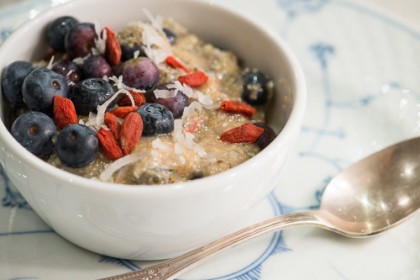 How you help your child depends on the severity of the symptoms. If your child has one problem (speech delay OR not sleeping through the night OR needs OT or PT OR is constantly sick OR has ear infections) then you could do research on the problem and try things that can help heal the underlying cause of the problem. But if your child has several issues (speech delay, poor sleeper, many ear infections, low muscle tone etc.) that are stacking up over time, then you need to try a more intensive intervention. There are several ways parents can begin to heal their kids before they find the right doctor or nutritionist that can tailor a nutritional program specifically for a child’s digestive, developmental or behavioral problems.
How you help your child depends on the severity of the symptoms. If your child has one problem (speech delay OR not sleeping through the night OR needs OT or PT OR is constantly sick OR has ear infections) then you could do research on the problem and try things that can help heal the underlying cause of the problem. But if your child has several issues (speech delay, poor sleeper, many ear infections, low muscle tone etc.) that are stacking up over time, then you need to try a more intensive intervention. There are several ways parents can begin to heal their kids before they find the right doctor or nutritionist that can tailor a nutritional program specifically for a child’s digestive, developmental or behavioral problems.1) Begin an elimination diet. You can try a gluten-free, casein-free, soy-free diet or begin researching and making changes based on severe symptoms. TACA has a dietary calendar that tells you in detail how to go GFCF in 10 weeks. Because the cerebellum is gluten and food sensitive and so many people have a problem with gluten it might make sense to give up gluten. Dairy is also a huge factor for kids with allergies, ear infections and developmental problems. And processed soy is not healthy for ANY child who is developing. For these reasons, starting an elimination diet makes sense for many chronic health problems that children face today. Some parents find it is easier to implement a restricted diet if a doctor or nutritionist recommends the change and testing confirms a problem. In this case, parents can wait to make changes.
Eliminating foods will make testing inconclusive–especially for celiac. I believe ALL kids with developmental problems should be tested for celiac BEFORE starting a gluten free diet. But while waiting for testing, parents can begin swapping products for more suitable products so everything is in place to begin an elimination diet when testing is finished. Moving toward a more nourishing diet with organic, homemade food and away from processed food is something any parent can try doing themselves. After testing, you still should try dietary intervention –kids who don’t test positive for celiac can also recover through a GFCF diet. Sometimes making dietary changes will reveal sensitivities and there is no better test for food intolerance than seeing your child recover from digestive or behavioral problems.
2) Probiotics are important for restoring healthy bacteria in the gut and most people can benefit from supplementation. This is especially important if your child is chronically sick, has digestive problems (especially constipation or diarrhea), repeated ear infections or problems absorbing iron. Processed food, repeated courses of antibiotics and too much sugar can all lead to an overgrowth of pathogenic bacteria. An overgrowth of bad bacteria
3) Plant based enzymes are available from Houston Enzymes and they help break down food allowing more nutrients to be absorbed and reduce inflammation. Because the body has to do less to break down the food, it can attend to other necessary activities like detoxifying, healing and growing. Houston Enzymes have helped both my kids get better. My two year old with severe digestive problems takes 2 capsules of Tri-Enza and 1 capsule of No-Phenol before each meal. (I open them into a few tablespoons of water or rice milk) My seven year old has two AFP Peptizide chewables if she is going to be eating any dairy or soy. The AFP Peptizyde allow her to eat food that might give her a stomach ache. With the chewables she can have a gluten free pizza at a party or ice cream.
Great Gluten Free Research/Articles for Parents
Our Gluten Free Story: A Speech Delay is actually an allergy syndrome
Benign Congenital Hypotonia (Low Muscle Tone) and the Gluten Free Diet
Top 10 Things that have helped our children get better…
Mystery Diagnosis: Celiac and Seizures




Heidi - Thanks for the great tips. I want to vouch for probiotics. I have noticed more and more pediatricians are making them part of any sick treatment plan because they are seeing results. Using probiotics on an ongoing basis, like everyday, can make up for a host of nutritional and lifestyle sins like sugar and convenience food, too much juice, etc. It is so easy, if you can give your kids vitamins, you can give them probiotics!
Isobella Stadin - Great article. Just starting to learn about probiotics, nutrition by elimination- I myself have allergies and all of my grandchildren. I have been previously been treating all symptoms with pharmacy prescriptions and anti-biotics. I see now this is only a bandaid-and not the answer.What got me started is a book by Lisa Bildo called: It Can Be Done Hopefully, I’m on the right track for myself and my family. Glad I found this article. Isobella